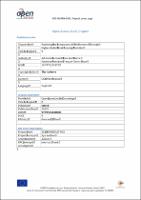Chapter 2 Exploring the Components of the Universe Through Higher-Order Weak Lensing Statistics Higher-Order Weak Lensing Statistics
| dc.contributor.author | Dupé, François-Xavier | |
| dc.contributor.author | Pires, Sandrine | |
| dc.contributor.author | Starck, Jean-Luc | |
| dc.contributor.author | Leonard, Adrienne | |
| dc.contributor.author | Leonard, Adrienne | |
| dc.contributor.author | Starck, Jean-Luc | |
| dc.contributor.author | Pires, Sandrine | |
| dc.contributor.author | Dupé, Franois-Xavier | |
| dc.date.accessioned | 2019-10-04 14:29:00 | |
| dc.date.accessioned | 2020-04-01T14:06:58Z | |
| dc.date.accessioned | 2016-08-01 23:55 | |
| dc.date.accessioned | 2019-10-04 14:29:00 | |
| dc.date.accessioned | 2020-04-01T14:06:58Z | |
| dc.date.accessioned | 2016-12-31 23:55:55 | |
| dc.date.accessioned | 2019-10-04 14:29:00 | |
| dc.date.accessioned | 2020-04-01T14:06:58Z | |
| dc.date.available | 2020-04-01T14:06:58Z | |
| dc.date.issued | 2012 | |
| dc.identifier | 612591 | |
| dc.identifier | OCN: 1030818880 | en_US |
| dc.identifier.uri | http://library.oapen.org/handle/20.500.12657/32344 | |
| dc.description.abstract | Our current cosmological model, backed by a large body of evidence from a variety of different cosmological probes (for example, see [1, 2]), describes a Universe comprised of around 5% normal baryonic matter, 22% cold dark matter and 73% dark energy. While many cosmologists accept this so-called concordance cosmology – the ΛCDM cosmological model – as accurate, very little is known about the nature and properties of these dark components of the Universe. Studies of the cosmic microwave background (CMB), combined with other observational evidence of big bang nucleosynthesis indicate that dark matter is non-baryonic. This supports measurements on galaxy and cluster scales, which found evidence of a large proportion of dark matter. This dark matter appears to be cold and collisionless, apparent only through its gravitational effects. | |
| dc.language | English | |
| dc.subject.classification | thema EDItEUR::P Mathematics and Science::PD Science: general issues | en_US |
| dc.subject.other | statistics | |
| dc.subject.other | exploring | |
| dc.subject.other | universe | |
| dc.subject.other | statistics | |
| dc.subject.other | exploring | |
| dc.subject.other | universe | |
| dc.subject.other | Algorithm | |
| dc.subject.other | Cross-correlation matrix | |
| dc.subject.other | Discrete wavelet transform | |
| dc.subject.other | Higher-order statistics | |
| dc.subject.other | Physical cosmology | |
| dc.subject.other | Redshift | |
| dc.subject.other | Wavelet | |
| dc.subject.other | Weak gravitational lensing | |
| dc.title | Chapter 2 Exploring the Components of the Universe Through Higher-Order Weak Lensing Statistics Higher-Order Weak Lensing Statistics | |
| dc.type | chapter | |
| oapen.identifier.doi | 10.5772/51871 | |
| oapen.relation.isPublishedBy | 09f6769d-48ed-467d-b150-4cf2680656a1 | |
| oapen.relation.isPartOfBook | 5d588364-6507-4874-ae75-99773e51d619 | |
| oapen.relation.isFundedBy | 7292b17b-f01a-4016-94d3-d7fb5ef9fb79 | |
| oapen.collection | European Research Council (ERC) | |
| oapen.chapternumber | 1 | |
| oapen.grant.number | 228261 | |
| oapen.grant.acronym | SPARSEASTRO | |
| oapen.grant.program | FP7 | |
| oapen.remark.public | Relevant Wikipedia pages: Algorithm - https://en.wikipedia.org/wiki/Algorithm; Cross-correlation matrix - https://en.wikipedia.org/wiki/Cross-correlation_matrix; Discrete wavelet transform - https://en.wikipedia.org/wiki/Discrete_wavelet_transform; Higher-order statistics - https://en.wikipedia.org/wiki/Higher-order_statistics; Physical cosmology - https://en.wikipedia.org/wiki/Physical_cosmology; Redshift - https://en.wikipedia.org/wiki/Redshift; Wavelet - https://en.wikipedia.org/wiki/Wavelet; Weak gravitational lensing - https://en.wikipedia.org/wiki/Weak_gravitational_lensing | |
| oapen.identifier.ocn | 1030818880 |

